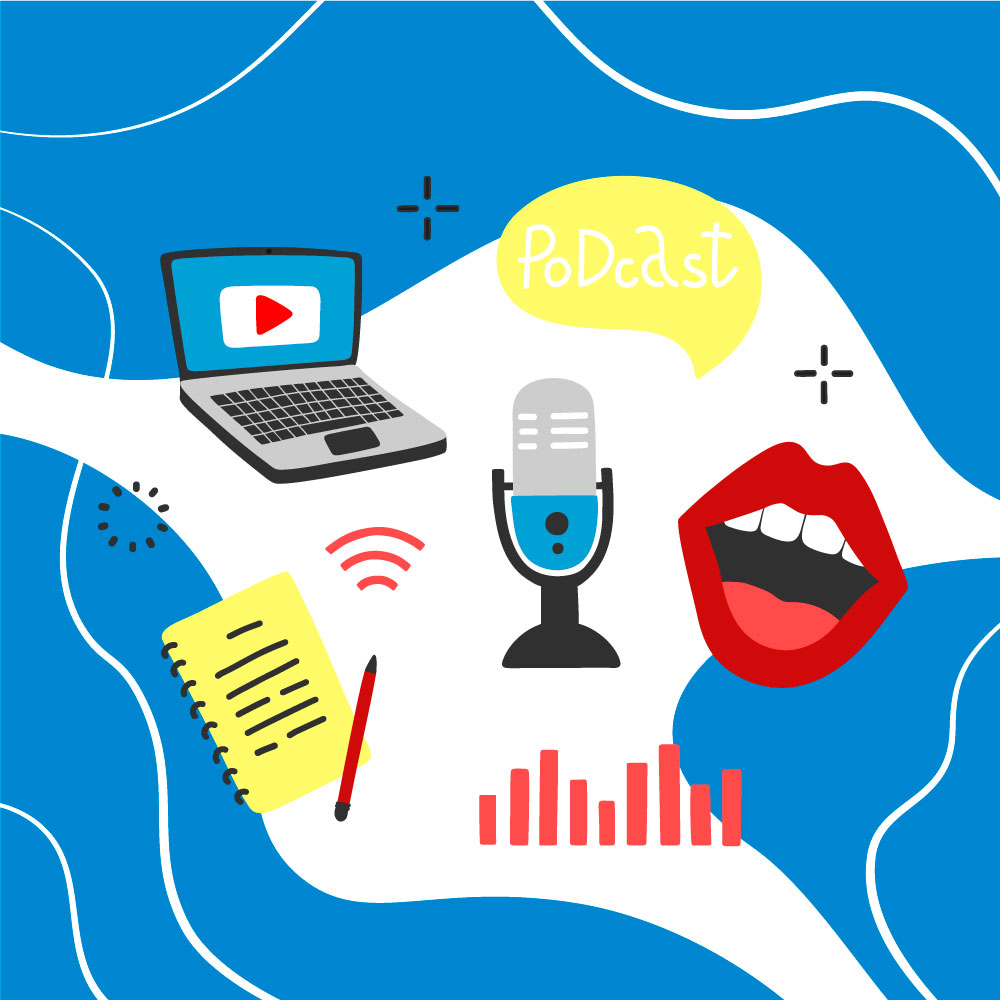
Audio content has never been more popular. Publishers recognize this; so do independent authors. Here’s a list of tips and tools for freelance editors who’d like to introduce audio content into their business workflow and amplify their editorial voices — literally!
5 advantages of audio
- Audio takes up less bandwidth than video. It’s therefore more stable during recording and less likely to buffer during playback.
- Audio files are smaller than video. When hosted natively, they’re less likely to slow down our websites.
- Our voices are unique brand identifiers that give listeners a sense of who we are beyond the words we write and edit.
- Not everyone can see. Audio is therefore another accessibility tool that allows us to communicate with a diverse audience.
- No one will know if we’re creating it in our pyjamas. That makes it a less intimidating option for editors who want to make a personal connection but who fear video.
2 pieces of kit
- Headset (mic and headphones). Something along the lines of Microsoft’s LifeChat series will likely suffice. I use the 6000, which retails for around $70.
- Courage. This is free though it can be hard to summon for the beginner!
3 ways to record
- Audacity: free open-source recording and editing software.
- Zoom: free online audio-conferencing platform.
- Skype: free online audio-conferencing platform.
3 ways to host
- Your website: either upload the audio files (native hosting) or embed the source code from another platform.
- Specialist audio distribution platform: paid options include Libsyn and Captivate. These are ideal for editors who are committed to regular broadcasting. SoundCloud offers three free hours of audio content.
- YouTube: upload to your existing channel.
6 ways editors can use audio
- To share knowledge: editors who solve clients’ problems get attention and build trust. We can use audio to answer the questions they’re asking, just as we do in our blogs. We can even repurpose existing blog content in audio form.
- To welcome: audio allows us to introduce ourselves to our website visitors using our unique voices — just like we’d do if we met someone on the street. It’s a personal and engaging way to say hello.
- To educate: what editors do is sometimes misunderstood and undervalued. We can use audio to explain what we do and how it will help potential clients, thereby raising the profile of the profession.
- To consolidate: a client who’s been staring at a screen all day might enjoy hearing our voice while we narrate an editorial report or critique.
- To promote: we can make our editorial businesses more visible by sharing our audio content on social media. As with GIFs and videos, it’s something a little different that gets us noticed.
- To assist: do people stumble over how to pronounce your name? In July 2020, LinkedIn solved this problem with a new feature that allows users to upload short audio clips via its Android and iOS apps.
5 ways to make audio interesting
- Use images: if you’re hosting the audio content on your website, link the file to an image that includes a headline explaining the nature of the content.
- Include a call to action: website visitors are more likely to listen if you tell them to.
- Add music: Incompetech, for example, provides free snippets from a range of genres under creative commons licences.
- Include a transcript: even though audio is compelling, sometimes people want to read.
- Create video from audio: use an app like Headliner to create audiograms that are animated with wave forms. Audiograms make your audio content more appealing to YouTube and social media audiences.
Audio content is now showing up in search engines. Editors who use it to solve problems and engage with clients and colleagues will increase awareness about themselves and the profession they love.
___
Previous post from Louise Harnby: Louise Harnby: An Editor’s Top 3
The Editors’ Weekly is the official blog of Editors Canada. Contact us.
Discover more from The Editors' Weekly
Subscribe to get the latest posts sent to your email.
